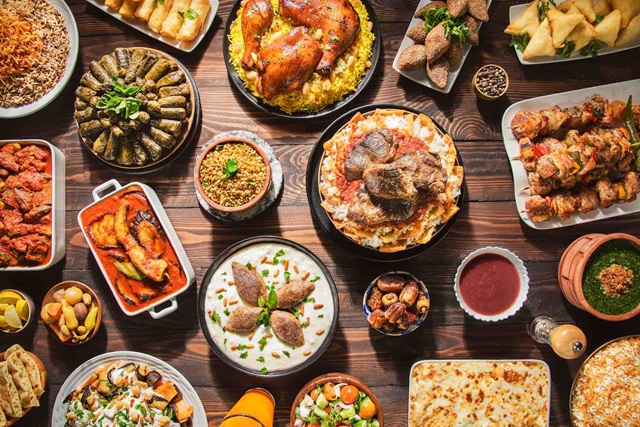Mughlai cuisine, known for its rich flavors, intricate recipes, and royal presentation, traces its origins back to the Mughal Empire in the Indian subcontinent. This culinary tradition blends Persian, Turkish, Indian, and Afghan influences, creating a unique and indulgent culinary experience. Here, we delve into the essential ingredients that form the backbone of Mughlai cuisine, while also exploring the historical context that shaped this exquisite culinary style.
Historical Background
The Mughal Empire, which ruled large parts of India from the early 16th to the mid-18th century, brought with it not only grand architectural achievements and cultural advancements but also a profound influence on Indian cuisine. The Mughal emperors, originally of Central Asian descent, had a penchant for lavish feasts and opulent dishes. They introduced Persian culinary techniques and ingredients to the Indian subcontinent, which were then adapted to local tastes and ingredients.
Under the patronage of emperors like Akbar, Jahangir, and Shah Jahan, Mughlai cuisine flourished in the royal kitchens. These emperors were known for their love of food, and their courts were home to master chefs who created elaborate dishes that became the hallmark of Mughlai cuisine.
Essential Ingredients
1. Spices and Aromatics
- Saffron: Known as the “golden spice,” saffron adds a unique aroma, flavor, and color to Mughlai dishes. It is often used in biryanis, kebabs, and desserts.
- Cardamom: Both green and black cardamom are used extensively. Green cardamom adds a sweet, floral note, while black cardamom provides a smoky, earthy flavor.
- Cloves and Cinnamon: These spices contribute to the warm and spicy undertones characteristic of Mughlai cuisine.
- Nutmeg and Mace: These spices are used sparingly to impart a sweet and slightly nutty flavor.
- Cumin and Coriander: Ground cumin and coriander seeds are foundational spices that provide depth and warmth to the dishes.
2. Dairy Products
- Ghee: Clarified butter, or ghee, is a key ingredient, used for frying, tempering, and as a base for various gravies and sweets.
- Yogurt: Yogurt is used as a marinade for meats and as a base for gravies, lending a creamy texture and tangy flavor.
- Cream and Milk: These are used to enrich the gravies, making them velvety and luscious.
3. Nuts and Dried Fruits
- Almonds and Cashews: These nuts are often ground into pastes to thicken sauces and add richness. They are also used as garnishes.
- Raisins: Raisins add a touch of sweetness to both savory and sweet dishes, balancing the flavors.
4. Meats
- Lamb and Goat: These meats are preferred in Mughlai cuisine, often used in slow-cooked curries and kebabs.
- Chicken: Chicken is widely used in various forms, from grilled kebabs to creamy kormas.
- Beef and Fish: While less common, they are used in certain regional Mughlai dishes.
5. Grains and Legumes
- Basmati Rice: Known for its long grains and fragrant aroma, basmati rice is essential for making biryanis and pilafs.
- Lentils and Beans: Various lentils and beans are used in dishes like dal makhani and rajma, which are staples in Mughlai cuisine.
6. Floral Essences and Water
- Rose Water: Rose water is used to impart a floral aroma to desserts and drinks.
- Kewra Water: Extracted from pandanus flowers, kewra water adds a distinct fragrance to rice dishes and sweets.
Signature Mughlai Dishes
1. Savory Dishes
- Biryani: A fragrant rice dish layered with spiced meat or vegetables, often garnished with fried onions, nuts, and saffron.
- Korma: A creamy and rich curry made with meat, yogurt, and a blend of spices, often enriched with nuts and dried fruits.
- Kebabs: Grilled or skewered meats marinated in a mix of yogurt and spices, including the famous seekh kebabs and shami kebabs.
- Naan and Paratha: Leavened and unleavened breads cooked in a tandoor or on a griddle, often served with curries.
- Rogan Josh: A fragrant lamb curry with a vibrant red color from Kashmiri red chilies, slow-cooked with aromatic spices and yogurt until tender.
- Murgh Musallam: A whole chicken marinated and cooked in a rich, spiced gravy, often stuffed with eggs and garnished with silver leaf.
- Nihari: A slow-cooked stew made with beef or lamb, cooked overnight for a deep, rich flavor, traditionally eaten as a breakfast dish.
- Shahi Paneer: A vegetarian dish featuring paneer (Indian cottage cheese) cooked in a creamy tomato-based gravy with spices and nuts.
2. Desserts
- Shahi Tukda: A royal dessert made from fried bread soaked in saffron-infused milk, garnished with nuts and silver leaf.
- Gulab Jamun: Deep-fried milk solids soaked in a fragrant sugar syrup flavored with cardamom and rose water.
- Sheer Khurma: A festive vermicelli pudding made with milk, dates, and nuts, often served during Eid celebrations.
- Phirni: A creamy rice pudding flavored with cardamom and saffron, served chilled and often garnished with nuts.
Conclusion
Mughlai cuisine is a testament to the culinary ingenuity of the Mughal era, blending diverse ingredients and techniques to create dishes that are rich, flavorful, and deeply satisfying. The use of aromatic spices, luxurious dairy products, and a variety of nuts and dried fruits creates a symphony of flavors that continue to delight food lovers around the world. The legacy of Mughlai cuisine lives on, not only in India but across the globe, wherever the rich, opulent flavors of this royal culinary tradition are cherished.

